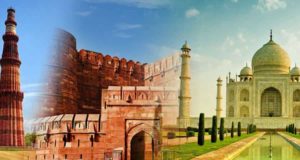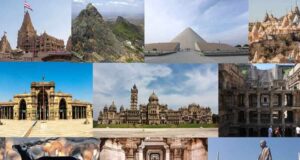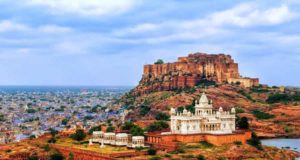History of Kerala
Pre-Historic Period
Kerala history Information The early history of Kerala is obscure (Iyer, 1968; Sreedhara Menon/ S. Menon, 1978). Evidence of the existence of pre-historic man in Kerala is mainly based on explorations in the Palakkad and Thenmala regions which have located some palaeolithic settlements. Findings of Stone Age cultures in Kerala by Rajendran from parts of Palakkad, Malappuram, Wayanad, Kollam and Thiruvananthapuram has placed Kerala in the Palaeolithic map of India. Neolithic man hunted animals for his food and resorted to fishing, cattle rearing and rudimentary agriculture.

Evidence of megalithic culture has been reported from many parts, mainly in the forms of monuments, burial urns, rock cut burial and other memorials used as partial / complete burials. Along with mortalsâ remains, the burials also contained implements, ornaments, utensils and weapons. There is no unanimity among the scholars regarding the period of these megaliths. Archeological like Sankalia believe that the megalithic culture came to Kerala from the neighboring sites in Tamil Nadu.
The ancient Kerala history can be arranged in three general categories: 1) the Aryan or Brahmanical version, 2) the British colonial Version (which greatly concurred with the Aryan); and 3) the Dravidian version. Various studies indicated a Negrito strain in the pre Dravidian population. The Kadar and the Urali are considered to be the descendants of this stock. The Negrito was submerged at an early period by the Australoid. The Dravidian people are believed to have migrated from the Mediterranean area.
The Sangam works like the Patiṟṟuppattu (ten tens), the Purananuru (external four hundred) and the Agananuru (internal four hundred), give very important clues to the early social and political history of Kerala. The date of the Sangam age is attributed to the first five centuries of the Christian era. The Sangam age indicate that the period saw an organized society. From post-Sangam works, the Silappathikaram and the Manimekalai, evidence of Aryan culture is traced by Menon.
The Aryans
The Aryans immigration is believed to have started towards the end of B.C. or in the early centuries of the Christian era. Jain and Buddhist missionaries were among the first in this wave and they set up settlements in different parts of the land.
By about the 8th century, the decline of Jainism and Buddhism became marked as a result of large scale colonization by the Vedic Brahman. The overall superiority of the Brahman in the fields of cultivation and political and economic administration enabled them to acquire dominance and impose their social and religious systems on Kerala and integrate themselves locally.
The major impact of Brahmanism was on the social structure, following the imposition of Chaturvarna (hierarchy of four categories of castes). The ruling classes, the warriors and the other sections were brought under Brahman dominance.
The early centuries of the Christian era also saw the influence of western religious thoughts. There is strong tradition regarding the establishments of Christianity in Kerala from 52 A.D. by none other than the Apostle Thomas (Mundadan 1987; L.K.A. Ayer, 1926; Thurston, 1990; and others).
Though the Jews in Kerala are a minuscule minority today, they were once an affluent trading community on the Malabar Coast who had settled in the ancient port city of Kodungallur and later in Cochin. The tradition is that they settled Kerala in 70 A.D.
The Islamic tradition in Kerala is traced back to the last Perumal of Kerala, Rajasekhara Varman, who went on pilgrimage to Mecca. The year in which he sailed on his pilgrimage is coterminous with the beginning of the Malayalam calendar’s Kollam era which commenced in 825 A.D. Logan (1887) suggests that the Muslims had established trade links by the 9th century.
Medieval Period
The medieval history of Kerala (9th A.D. to 19th A.D.), like that of medieval Europe, comprises of a thousand years. But the period begins 300 years after its beginning in Europe and ends a corresponding 300 years later-from the 9th to the 19th century.
There is disagreement among the historians regarding the ending of the medieval history in Kerala. The establishment of Portuguese power on the Malabar Coast in the early 16th century is considered by some as end of the medieval history in Kerala.
The medieval Kerala history is marked by important socioeconomic changes and the formation of new social and economic institutions. Regarding the political authority of the 8th and 9th centuries, Logan writes that the community was in the very advanced state of organization at the head of all was Kon or King.
The 11th century is a watershed in Kerala History and the pace of change from patriliny to matriliny among the castes like the Nayar must have been accelerated by the events of this period.
Modern History of Kerala
Modern history of Kerala starts with the establishment of British supremacy. At the end of the Mysore war in 1792, Kerala comprised of three political divisions Travancore, Cochin and British Malabar. British suzerainty was forced on Cochin and Travancore through treaties. Initial resistance and challenge to British supremacy by Kerala Varma Pazhassi Raja in the north and by Velu Thampi Dalawa in the South were suppressed. A series of changes occurred in social, religious and economic institutions because of English education and the administrative reforms introduced by the British. The most among them were: (i) abolition of slavery in Travancore in 1818 and in Cochin in 1821; (ii) the tenancy acts of 1896 and the removal of restrictions on dress and ornaments as a result of the â Shanar Agitation in 1859. The inauguration of the Legislative council in 1888 and the Sri mulam Assembly in 1904 in Travancore heralded the advent of democratic trends in Kerala.
The princely State of Travancore and Cochin were integrated into a separate state Thirukochi (Travancore-Cochin) under a Rajpramukh in 1949, after Independence. Royalty was subsequently abolished and the Malayalam speaking State of Keralam came into existence on November 1, 1956 as a fully fledged state of the Indian Union with the integration with Thirukochi of the Malabar Districts and the Kasaragod and Wayanad taluks of the erstwhile Madras state. In the State Assembly election that followed, a communist ministry under E.M.S Namboodiripad came into power. A major economic reform in the post independence period was the Kerala Agrarian Relations Act, first enforced in 1961 and followed by the amended Act of 1969 which brought revolutionary changes in traditional land tenure. It abolished the landlordism in Kerala; conferred full ownership on the cultivating tenants; gave the kudikidappukar fixity of occupation.
Thus, the cultural heritage of the people of Kerala is derived from synthesis of many traditions, pre-Dravidian, Dravidian, Aryan, Christian, Jewish, Islamic and European. But the fact remains that Kerala history has retained many of her pristine Malayali cultural elements.


